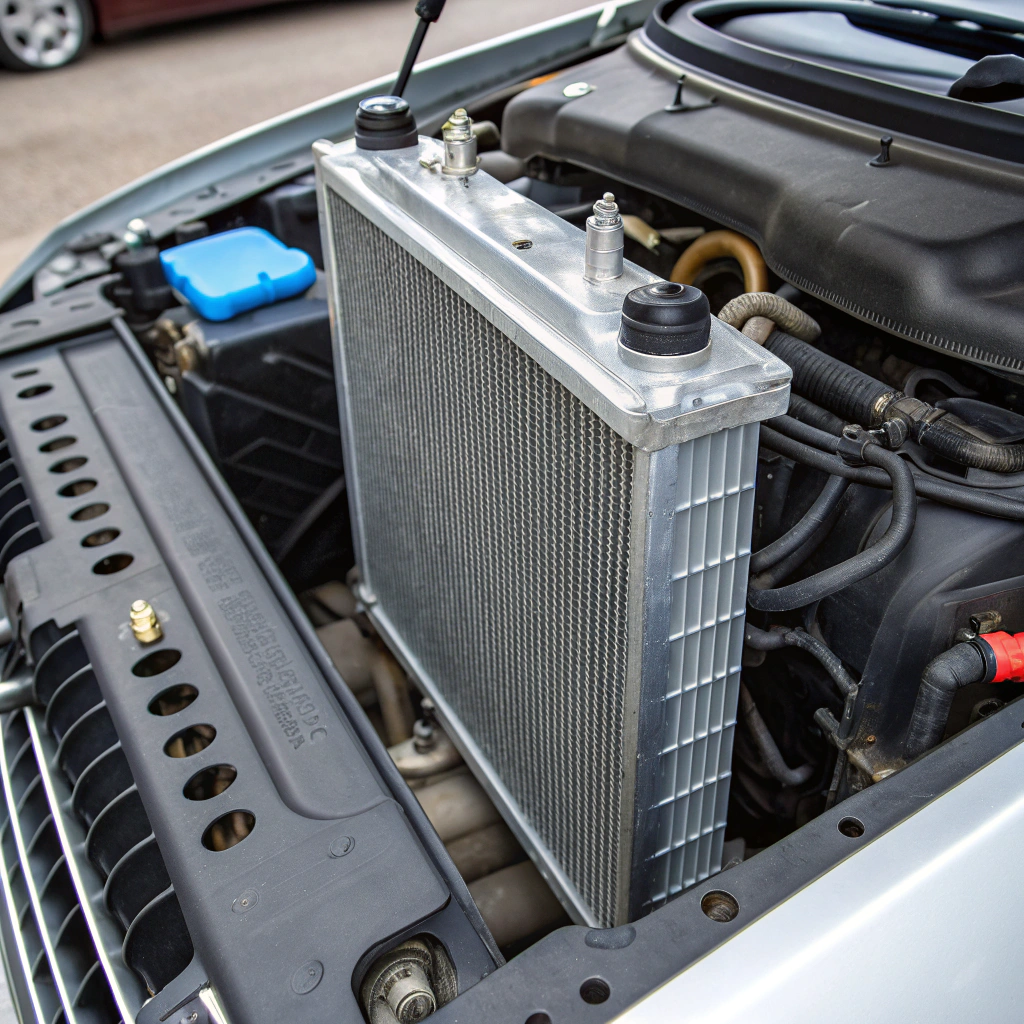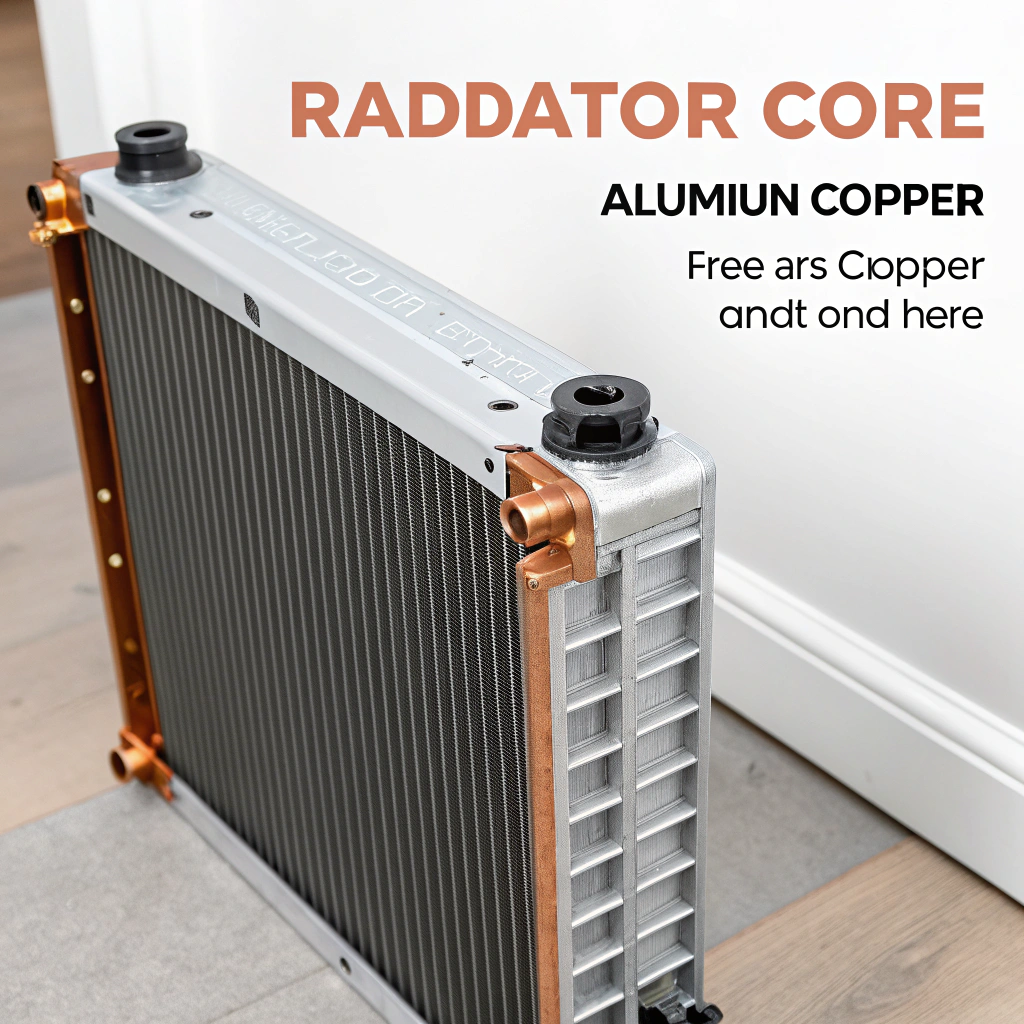What is a radiator in an automobile?
Many drivers only think about the radiator when their engine overheats. But this simple-looking part plays a crucial role in keeping your car running.
A car radiator is a heat exchanger that cools the engine by transferring heat from coolant to the air. Without it, engines would quickly overheat and fail.
Radiators don’t get much attention—until something goes wrong. Understanding how they work helps prevent breakdowns and saves on expensive repairs.
How does a car radiator work?
Many car owners have no idea how heat leaves the engine. The radiator handles this quietly every time the engine runs.
A car radiator works by circulating coolant through the engine to absorb heat, then passing that heated coolant through thin metal fins where air cools it down.
The working process is simple but effective:
Step-by-step breakdown
- The engine heats up as it burns fuel.
- Coolant absorbs engine heat while circulating through it.
- The hot coolant moves to the radiator.
- The radiator cools the liquid using airflow.
- The now-cooled coolant cycles back to the engine.
Two types of airflow
- Mechanical fans: Driven by engine belts. Common in older cars.
- Electric fans: Controlled by temperature sensors. More efficient in modern vehicles.
The radiator maintains optimal engine temperature—usually between 195°F and 220°F. This keeps fuel combustion efficient and prevents damage.
Radiators work by allowing coolant to absorb heat and release it through metal fins.Правда
The radiator uses coolant to absorb heat from the engine and then releases that heat into the air through thin metal fins.
A radiator cools the engine using fuel combustion gases.Ложь
The radiator does not use combustion gases; it uses coolant and air flow to transfer heat away from the engine.
What parts make up a car radiator?
When most people look at a radiator, they only see metal tubes. But several hidden parts work together inside it.
A car radiator is made up of the core, inlet and outlet tanks, hoses, a radiator cap, fan, and thermostat—all working together to move and cool the engine’s coolant.
Let’s look at each key part and what it does:
Radiator core
- Central section with rows of tubes and fins.
- Coolant flows inside tubes.
- Fins help air remove heat from tubes.
Inlet and outlet tanks
- Hold coolant before and after it flows through the core.
- Often made of plastic or aluminum.
Radiator hoses
- Two main rubber hoses.
- Upper hose: Delivers hot coolant from engine to radiator.
- Lower hose: Sends cooled liquid back to the engine.
Radiator cap
- Pressurizes the system to raise boiling point.
- Usually set at 13–16 psi.
- Allows coolant to overflow into the expansion tank.
Cooling fan
- Sits behind or in front of radiator.
- Pulls air through fins when the car isn’t moving fast.
Thermostat
- Controls when coolant flows into radiator.
- Opens only after engine reaches optimal temperature.
Here’s a table to summarize the major parts:
| Часть | Материал | Функция |
|---|---|---|
| Radiator core | Aluminum/copper | Transfers heat from coolant to air |
| Hoses | Резина | Move coolant between engine and radiator |
| Radiator cap | Metal/plastic | Maintains system pressure |
| Thermostat | Металл | Regulates coolant flow |
| Fan | Plastic/metal | Moves air through radiator |
The thermostat in a radiator controls when coolant starts circulating.Правда
The thermostat opens once the engine reaches a set temperature, allowing coolant to flow into the radiator.
Radiator hoses are made of metal to handle high heat.Ложь
Radiator hoses are made of rubber, not metal, because they need flexibility and heat resistance.
Why is a radiator important for engine cooling?
Many think engines can cool themselves. That’s not true. The radiator is the heart of the engine’s cooling system.
The radiator prevents the engine from overheating by managing coolant temperature, allowing the engine to perform safely and efficiently.
Overheating can cause:
- Warped engine components
- Head gasket failure
- Total engine seizure
The radiator ensures none of that happens. It keeps the engine’s temperature within the safe range, no matter the outside temperature or how hard the engine works.
How engine cooling protects performance
- Efficient combustion: Cooler engines burn fuel more efficiently.
- Prevents oil breakdown: Overheating can destroy motor oil.
- Prolongs engine life: Less wear and tear on engine components.
Radiator as part of the larger cooling system
Here’s how the radiator fits in the overall picture:
| System Part | Job |
|---|---|
| Water pump | Moves coolant through the engine |
| Thermostat | Controls coolant flow based on temperature |
| Радиатор | Cools the heated coolant |
| Fan | Increases air flow when needed |
| Reservoir tank | Holds excess coolant |
If any of these fail, the radiator can’t do its job.
Without a radiator, the engine would eventually overheat and fail.Правда
The radiator is essential for cooling; without it, engine heat has nowhere to go.
Engines stay cool on their own without help from a radiator.Ложь
Engines generate too much heat to cool themselves passively, so radiators are necessary.
What happens when a radiator fails?
I once ignored a leaking radiator. It cost me an engine. Trust me—it’s not worth it.
When a radiator fails, the engine can overheat quickly, leading to costly damage like cracked blocks, blown head gaskets, or even complete engine failure.
Signs your radiator is failing
- Engine overheating
- Coolant leaks under the car
- Rusty or sludgy coolant
- Steam from under the hood
- Temperature gauge in the red
Common radiator problems
| Проблема | Причина | Решение |
|---|---|---|
| Leaking radiator | Cracked tanks or corroded core | Replace or repair radiator |
| Clogged radiator | Dirty or old coolant | Flush and refill coolant system |
| Faulty cap | Worn seal or spring | Replace radiator cap |
| Broken fan | Electrical failure | Repair or replace fan motor |
| Stuck thermostat | Fails to open | Replace thermostat |
Why radiator failure is so serious
Radiator issues escalate fast:
- Even 5 minutes of overheating can warp a cylinder head.
- You may lose power or stall mid-drive.
- If the coolant leaks out, the engine can’t cool at all.
I learned to check my coolant and radiator every few weeks. A cheap pressure test could’ve saved me thousands.
Radiator failure can cause severe engine damage within minutes.Правда
Overheating due to radiator failure can warp engine parts or blow head gaskets quickly.
Radiator problems only cause minor issues like noise or vibration.Ложь
Radiator failure is a major issue; it can lead to complete engine breakdown, not just minor annoyances.
Заключение
The radiator is more than a metal box—it’s a vital part of your car’s life support system. If it fails, the engine suffers. That’s why I always keep my eye on coolant levels and check for leaks. A healthy radiator means a healthy engine, and peace of mind on the road.
![[Short, catchy title for the product image, emphasizing the brand or model name] Product image of [Description of the product, including key features or aesthetic details]](https://sinoextrud.com/wp-content/uploads/product-image-of-description-of-the-product-including-key-features-or-aesthetic-details.webp)







